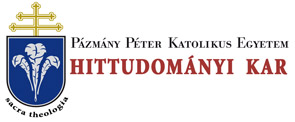Folia Theologica 9. (1998)
György Benyik: Hungarian Bible Translation
224 GY. BENYIK HUSZTI, JÁNOS PELEI, PÉTER KÁROLI and his brother MIKLÓS KÁROLI under Gáspár Károli’s guidance. For his translation he used the versions of VATABLUS, PAGNINUS, MUNSTER, TREMELLIUS51 and the VULGATE. He also used the results of previous Hungarian translations, and we can see the influence of such translators as Gábor Pesthi, János Sylvester, Gáspár Heltai, Tamás Félegyházi in it. The small printing-press which had been used for printing the books of great reformers became a worthy device to publish this work. It was meant to be a denominational version against the Catholic ‘papist’ Bible. With this publication the idea of the Catholics falsifying the Bible started to become commonplace. The Catholics, of course, said the same about the Protestants. The Catholic answer to Károli’s translation was made by a Jesuit, GYÖRGY KÁLDY.52 He was the protégé of the great cardinal of Hungarian Counter-Reformation, Péter Pázmány. From 1559 Káldy studied theology in Vienna and joined the Jesuits. In 1603 he was the master of the noviciates in Brünn, and later he became a preacher in Kolozsvár, Nagyszombat and Graz. In 1625 he established a college in Pozsony equipped with a printing-press. He enjoyed the confidence of both the Protestant Prince of Transylvania, Gábor Bethlen and the Viennese Court. His translation was commissioned by Péter Pázmány, and he started work on 11 October 1605 in Gyulafehérvár, finishing it on 25 51 Vatablus, F. (1547) Hebraist in Paris, who with his original text based exegesis started a new trend of interpretation, cf. Adnotationes in FT. His Bible translation with Calvin’s annotations was published by R. Estienne. Pagnino, Santés. (I486) orientalist and Bible translator. Encouraged by Leo X. he started to study Árabic and Hebrew, and it took him 25 years to translate the Old Testament from Hebrew and the New Testament from Greek into Latin. This work was strongly criticised by Richard Simon in his introduction. Rotterdam, 1685. Munster, S. (1488-1552) Teacher in Heidelberg, Tübingen and Basel. Hebraist, who published a Biblia Hebraica. Basel, 1534-35., a Hebrew translation of Matthew. Basel, 1537. and a Hebrew-Latin Bible. The Latin part is not as interesting as the Hebrew. Tremellius, E. (1510-1580) Jew, who later converted to Christianity. He worked in Italy, France and in Cambridge. He wrote a grammar, Rudimenta linguae hebrae. Vienna, 1541., His Old and New Testaments were widely used by reformers. Syra Novi Testamenti hebraici typis descripta. Paris, 1569.; Biblia sacra sive libri canonici latini recens ex Hebraeo facti. Fan- cofort, 1579., Londres, 1580. 52 RÉV AY, S. Káldy György életrajza. Pécs, 1900.; HOLL, B. Adalékok a Káldy Biblia történetéhez, in Magyar Könyvszemle, 1956.; HOLOV1CS, F. Ki fordította a Káldy-féle Bibliát? in Irodalomtörténeti Közlöny, 1962.
